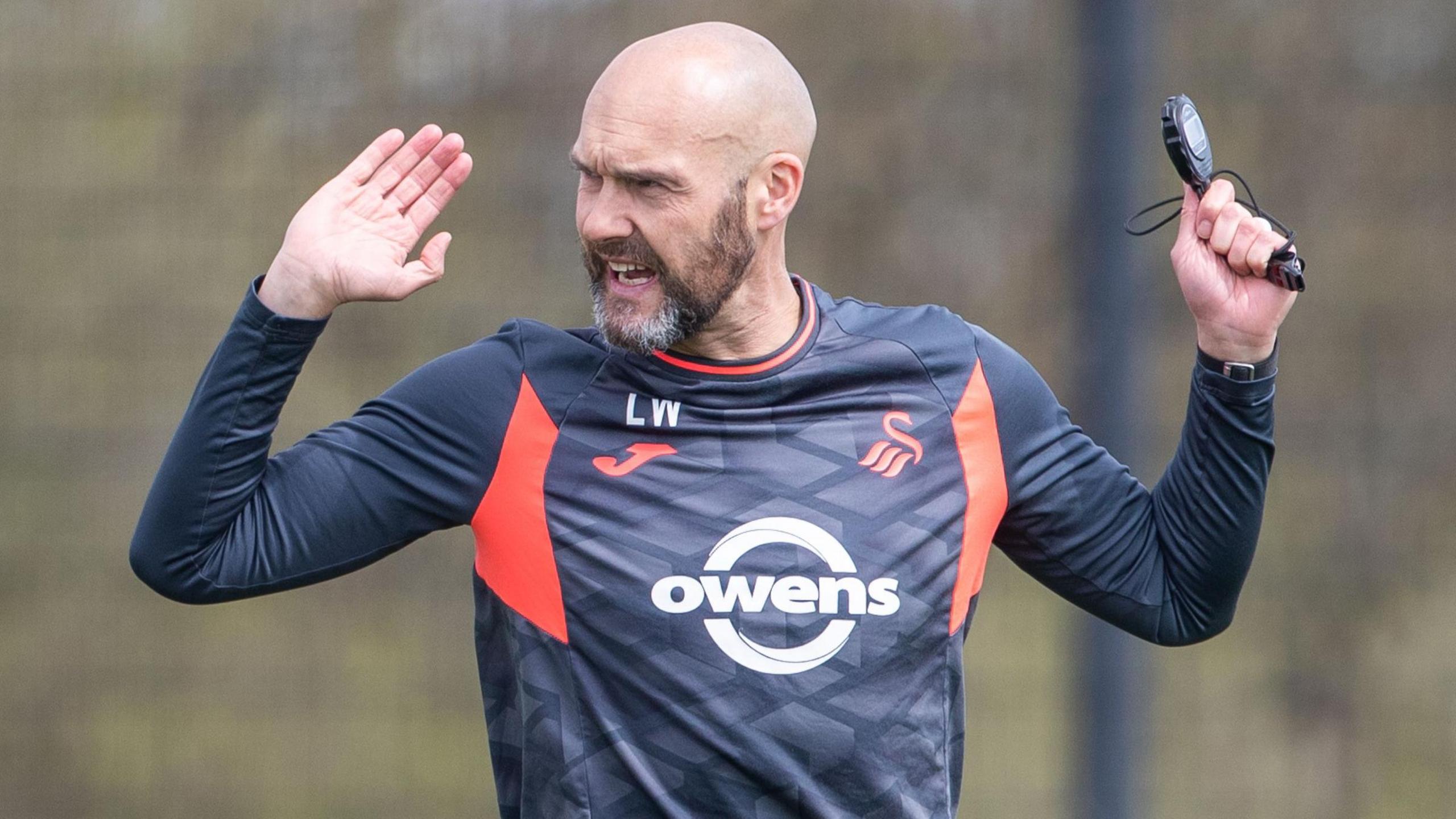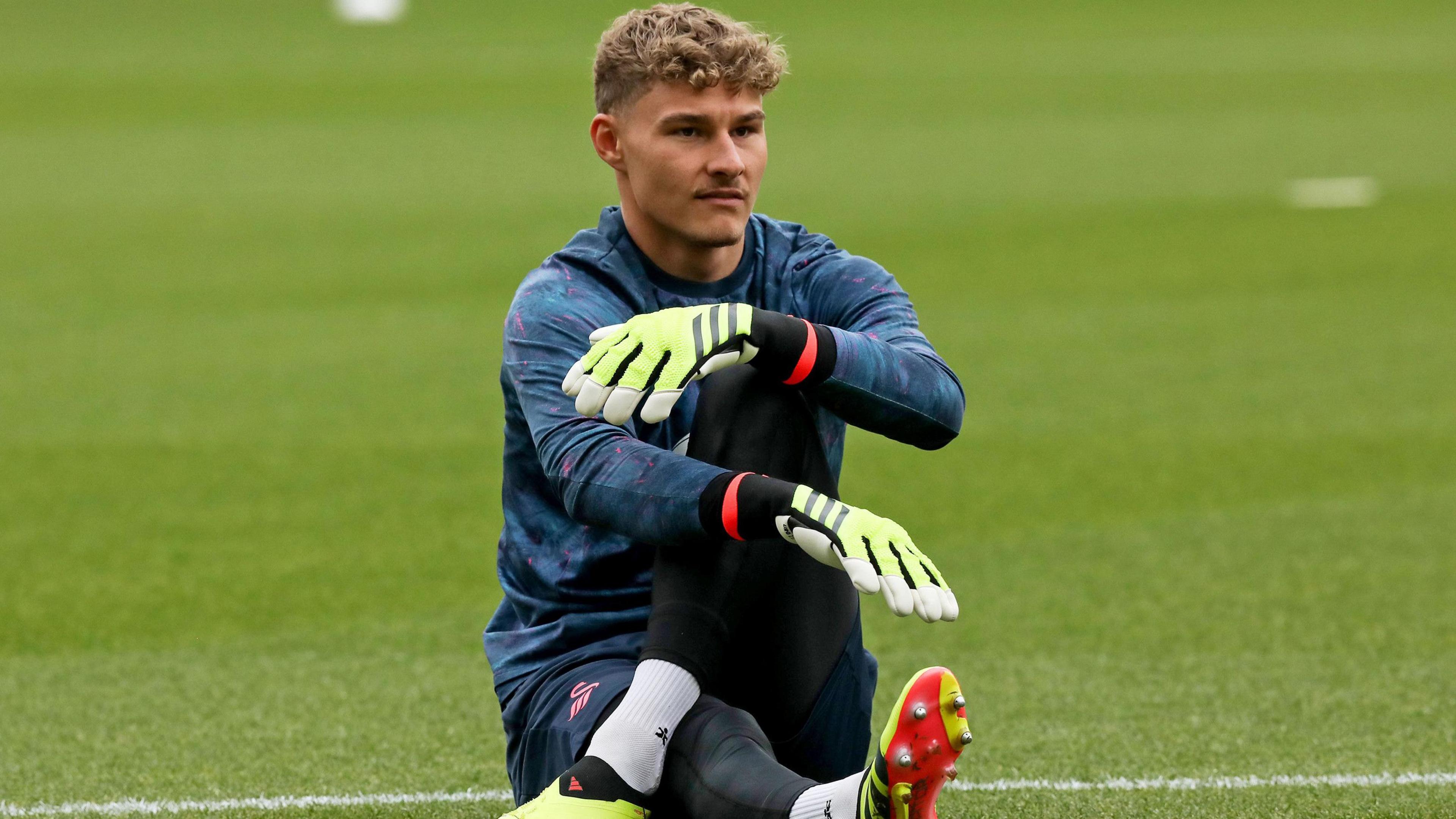Big summer after hard year - Swansea season review

Luke Williams has seven wins in 20 league games as Swansea's head coach
- Published
Swansea City will be glad to see the back of 2023-24, a turbulent season where difficult days were more common than moments to savour.
There were at least green shoots of recovery beginning to appear in the closing stages of a campaign during which Swansea spent much of their time looking nervously at the Championship table.
They ended up 14th, seven points clear of the drop zone and 16 short of the play-offs. Twelve months earlier, they had finished just one win short of the top six.
As Luke Williams put it when the curtain came down last weekend, it would be “crazy” to think there is anything other than a great deal of work to be done this summer if Swansea are to enjoy a more fruitful season next time around.
Defeat by Millwall on the final day meant Swansea ended the season with 57 points, their lowest final tally since relegation from the top flight in 2018.
Aside from the Premier League years, it was the fewest points Swansea have mustered in a season since 2002-03, when it took a final-day hat-trick from James Thomas to save the club from relegation to non-league football.
Swansea are a long way from that level right now, of course, but they also look some distance away from achieving their goal of returning to the top division.
What went right?

Carl Rushworth payed all 46 Championship games for Swansea this season, ahead of Andy Fisher
There were encouraging signs in a number of Swansea’s springtime displays.
Having veered away from the so-called Swansea way – which, loosely, means a commitment to possession football – with the appointment of Michael Duff last summer, the club’s hierarchy looked to shift back to a more familiar philosophy by luring Williams from Notts County in January.
Williams’ Swansea have usually controlled the ball and, having sorted out some of their defensive frailties, have proved capable of getting results.
Having taken just four points from Williams’ first seven league games – many of which were against the Championship’s top sides – Swansea banked a much more healthy 21 points from the last 13 fixtures of the campaign.
Williams is a coach whose teams will create chances. Swansea’s challenge is to convert more of them next season, while maintaining the defensive efforts seen in the latter stages of this campaign.
Unless Swansea can secure a second loan deal for the Brighton goalkeeper, Carl Rushworth will be missed having impressed in during his season in south Wales.
Full-backs Josh Tymon and Josh Key were two more of last summer’s many signings who made significant impacts.
Swansea have sound options in central defence in Ben Cabango, Harry Darling and Nathan Wood, though it would be no shock should the latter be sold in the next couple of months.
Other players who had positive moments across 2023-24 include Jamie Paterson, January recruit Ronald and the dependable Matt Grimes, while Jamal Lowe was a solid loan signing.
What went wrong?

With 10 goals each, Jerry Yates (left) and Jamal Lowe (right) finished as joint leading scorers at Swansea in 2023-24
The issues began last summer, when there was mass change on and off the pitch.
Russell Martin had repeatedly expressed a desire to sign a new Swansea contract but eventually left for Southampton, while Andy Coleman became chairman and Paul Watson arrived from Luton as sporting director.
The new regime’s first big call was to appoint Duff, a move which looked questionable from the start given his playing style.
Less than six months later, and with fans struggling to work out their team’s tactical approach, Duff was sacked.
Alan Sheehan did a positive job as interim boss before Williams was appointed around a month later, after Swansea had failed in an attempt to land Tottenham Hotspur’s Chris Davies.
As well as changes to the club’s hierarchy, there were numerous player transfers in the last close season – and too many are yet to pay off.
Swansea agreed a deal worth around £3m for Jerry Yates, who chipped in with 10 goals without ever looking entirely at home as he attempted to replace Joel Piroe.
Yates’ time may yet come, but then Swansea may sell should there be interest from elsewhere in the upcoming transfer window.
Another significant fee was paid for Mykola Kuharevich, a targetman who failed to convince any of Swansea’s three bosses this season that he was worth a regular place.
Kristian Pedersen and Nathan Tjoe-A-On arrived last summer and left on loan in January, while loan signings Bashir Humphreys, Harrison Ashby, Charlie Patino and Charles Sagoe Jr did not have the impact Swansea had hoped for.
What do they need this summer?
After so many major alterations across the club last summer, this year’s changes should largely come within the playing squad.
Swansea are yet to say whether Kyle Naughton, Joe Allen, Liam Walsh, Jamie Paterson, Przemyslaw Placheta and Nathanael Ogbeta – all of whom are out of contract as things stand – have been offered new deals.
While nothing has been confirmed, Williams is thought to be keen to retain some of his experienced heads at the very least.
Whatever happens with that group, there will once again be a major focus on recruitment before Swansea begin their seventh straight season in the Championship in August.
Goalkeeper, full-back, centre-back, central midfield, wing and up front are all areas which need varying degrees of attention. In other words, every department in Williams’ squad.
Should he get what he wants, Williams will feel optimistic about Swansea’s prospects for 2024-25.
But Swansea’s hierarchy need to get more close-season decisions right than they did last year to give themselves hope of achieving anything significant in the next campaign.